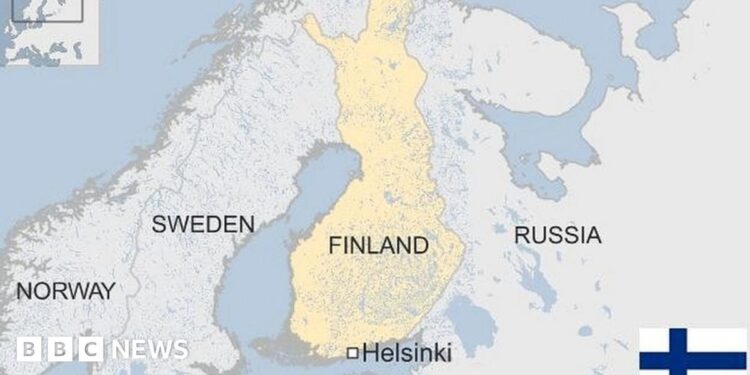Finland is set to take the helm in advancing international collaboration on naval mine warfare, underscoring its growing strategic role in maritime security. In a move announced this week, Helsinki will lead a cooperative initiative aimed at enhancing the development, deployment, and countermeasures of naval mines among allied nations. This leadership position reflects Finland’s commitment to strengthening regional defense capabilities amid evolving maritime threats, as detailed in reports from navalnews.com.
Finland’s Strategic Role in Enhancing Regional Naval Mine Countermeasures
Finland is rapidly emerging as a pivotal force in regional naval mine countermeasures, leveraging its extensive expertise in cold-water naval operations and advanced maritime technology. The country’s geographic position in the Baltic Sea, coupled with its long history of naval defense innovation, uniquely positions it to coordinate and enhance multinational efforts aimed at securing crucial sea lanes. Finnish leadership in this domain is set to foster greater interoperability between regional navies, creating a robust framework for rapid response to mine threats that could disrupt commercial and military maritime traffic.
The Finnish approach to mine countermeasures emphasizes a combination of cutting-edge unmanned systems, acoustic and magnetic detection technologies, and coordinated training exercises with allied naval forces. This multifaceted strategy not only enhances situational awareness but also reduces risks to personnel and vessels during mine clearance operations. Key assets under Finland’s direction include:
- Autonomous underwater vehicles (AUVs) for remote mine detection and neutralization
- Advanced sonar systems optimized for the Baltic’s challenging underwater environment
- Joint multinational training programs to streamline operational procedures and command protocols
| Capability | Finnish Asset | Benefit |
|---|---|---|
| Remote Detection | HUGIN AUV | Minimizes human exposure to mines |
| Mine Disposal | ROV MCM Systems | Efficient and precise neutralization |
| Training | Annual Baltic MCM Exercises | Enhances multinational coordination |
Innovative Technologies Driving Finland’s Naval Mines Cooperation Initiative
At the core of Finland’s new naval mines cooperation initiative lies a suite of cutting-edge technologies designed to enhance maritime security and operational efficiency. Leveraging advanced autonomous underwater vehicles (AUVs) equipped with sophisticated sonar and magnetic sensors, Finnish defense researchers are capable of detecting and neutralizing naval mines with unprecedented precision and minimal human risk. The integration of artificial intelligence-driven analytics enables real-time threat assessment, allowing allied forces to adapt swiftly to dynamic maritime environments.
Moreover, the cooperation framework is supported by the deployment of smart moored mines that feature self-neutralizing mechanisms and encrypted communication protocols to prevent unauthorized use. This new generation of naval mines operates within a secure, networked grid, enhancing interoperability across partner navies. The table below highlights some key technological attributes fueling this initiative:
| Technology | Capability | Benefit |
|---|---|---|
| Autonomous Underwater Vehicles | High-resolution detection | Reduced risk to personnel |
| AI-Powered Threat Assessment | Real-time analysis | Faster operational decisions |
| Smart Moored Mines | Self-neutralization & encryption | Secure, controlled deployment |
Policy Recommendations for Strengthening Multinational Maritime Security Partnerships
Enhancing interoperability and intelligence sharing should be the cornerstone of any successful maritime security partnership. Nations must invest in standardized communication protocols and joint training exercises that replicate real-world naval mine threats. This approach not only improves rapid decision-making but also builds trust among multinational forces. Encouraging the development of shared technological platforms for detection and neutralization can further streamline operations, minimizing response times and maximizing area coverage in contested waters.
Policy frameworks need to prioritize equitable resource sharing and the establishment of clear command hierarchies during multinational operations. Key recommendations include:
- Regular multilateral forums to review emerging threats and update joint operational protocols
- Funding mechanisms aimed at supporting smaller navies’ participation in joint mine countermeasure initiatives
- Commitments to transparency regarding capabilities and limitations
- Legal agreements that facilitate cross-border collaboration and asset deployment
| Policy Area | Objective | Expected Impact |
|---|---|---|
| Interoperability Standards | Unified training & communications | Faster coordinated responses |
| Joint Intelligence Sharing | Real-time threat detection | Reduced surprise incidents |
| Resource Allocation | Equitable funding & equipment | Greater operational inclusivity |
| Legal Frameworks | Cross-border cooperation | Seamless multinational missions |
In Conclusion
As Finland takes the helm in leading naval mines cooperation, the move underscores the country’s growing strategic role in maritime security within the Baltic region and beyond. This initiative not only enhances collaborative defense efforts among allied navies but also signals a proactive approach to addressing emerging naval threats in an increasingly complex security environment. Stakeholders and observers will be closely watching how Finland’s leadership shapes future developments in mine warfare tactics, technology, and multinational coordination.
















